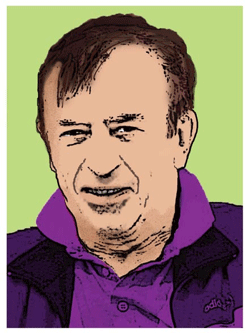Proust questionnaire: William J. McLaren, MD

What profession might you have pursued, if not for medicine?
Pilot
Which talent would you most like to have?
Ability to play the piano.
What do you consider your greatest achievement?
Marrying my beautiful wife.
Who are your heroes?
My teacher Lord Russell Brock and tennis player Roger Federer.
What is your idea of perfect happiness?
Ruminating in starlight at our Shuswap Lake cottage.
What is your greatest fear?
Dying before my handicapped wife.
What is the trait you most deplore in yourself?
My inability to catch up.
What characteristic do your favorite patients share?
A sense of trust that I was doing my best.
Which living physician do you most admire?
Michael S. Wilson, my GP.
What is your favorite activity?
Reading the New Yorker in bed when not at tennis or skiing.
What medical advance do you most anticipate?
Voluntary euthanasia.
What is your most marked characteristic?
Sans froid.
On what occasion do you lie?
Hopefully never now in retirement, but at times to soften the blow of telling bad news.
What do you most value in your colleagues?
Their friendship.
Who are your favorite writers?
Malcolm Gladwell and David Remnick.
What is your greatest regret?
That I did not recognize precursors to my wife’s stroke.
How would you like to die?
Suddenly from whatever.
What is your motto?
In virtue are riches.
hidden
The Proust Questionnaire has its origins in a parlor game popularized by Marcel Proust, the French essayist and novelist, who believed that, in answering these questions, an individual reveals his or her true nature. To submit a Proust Questionnaire visit https://www.bcmj.org/content/contribute.
